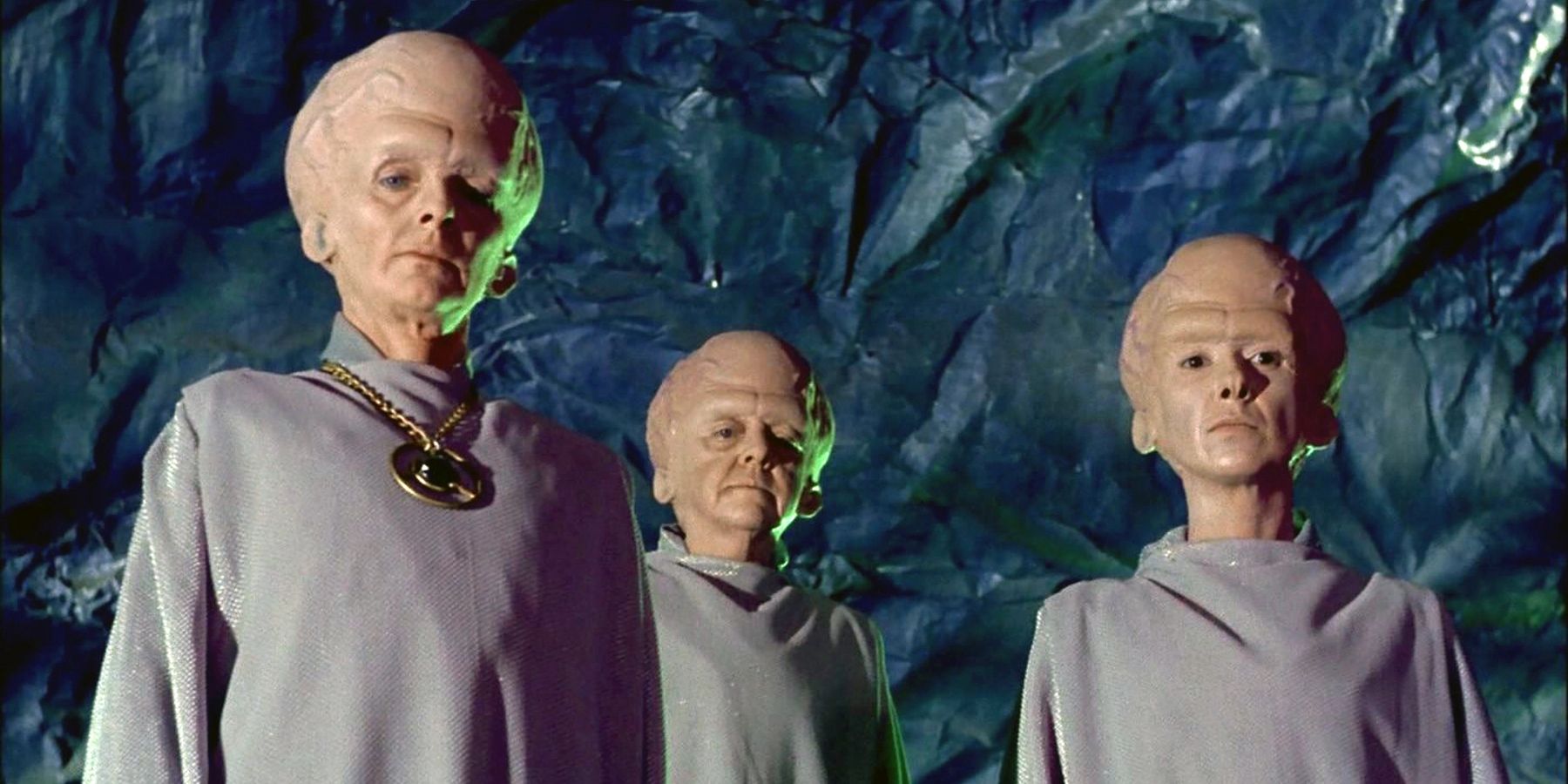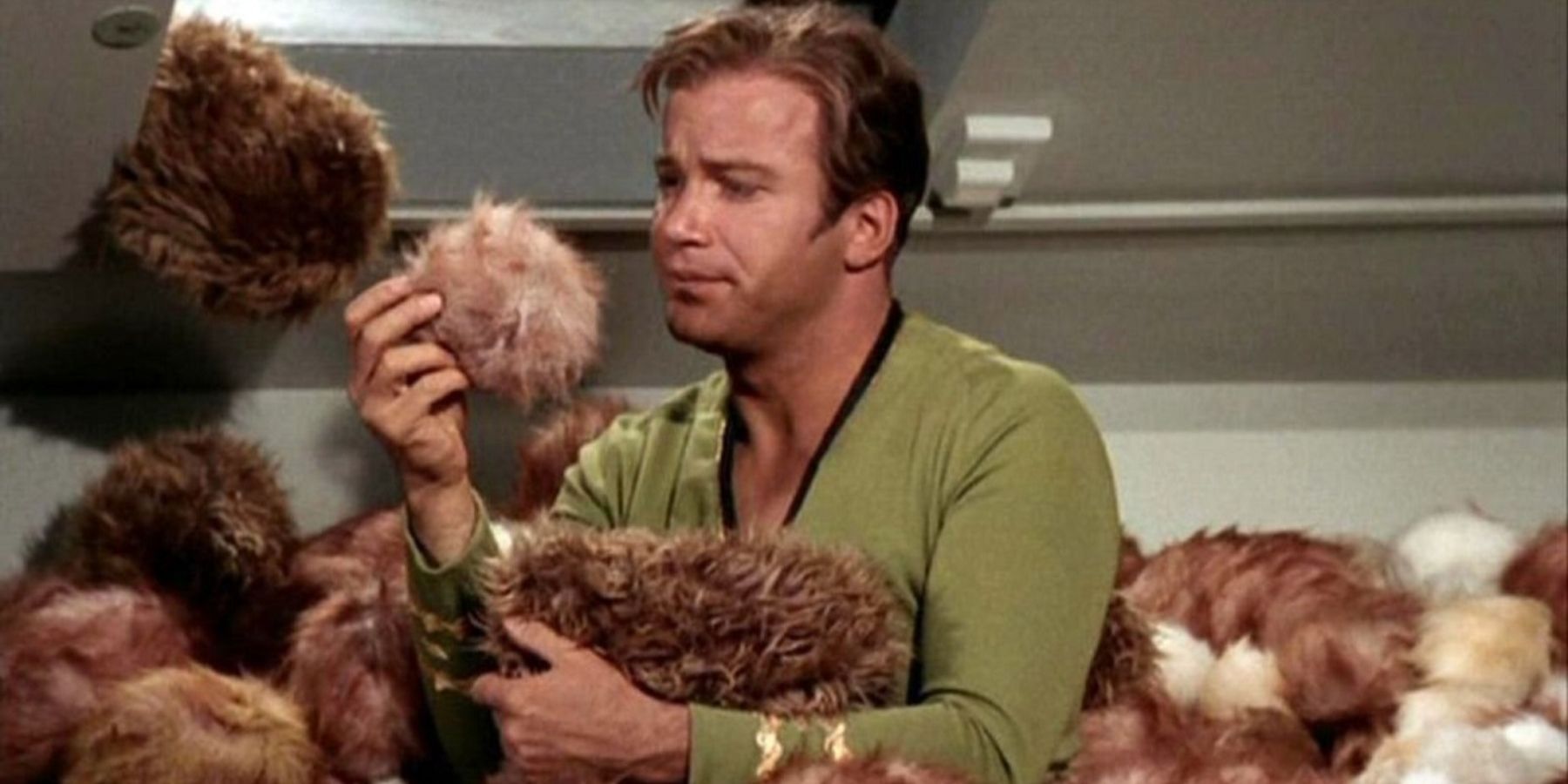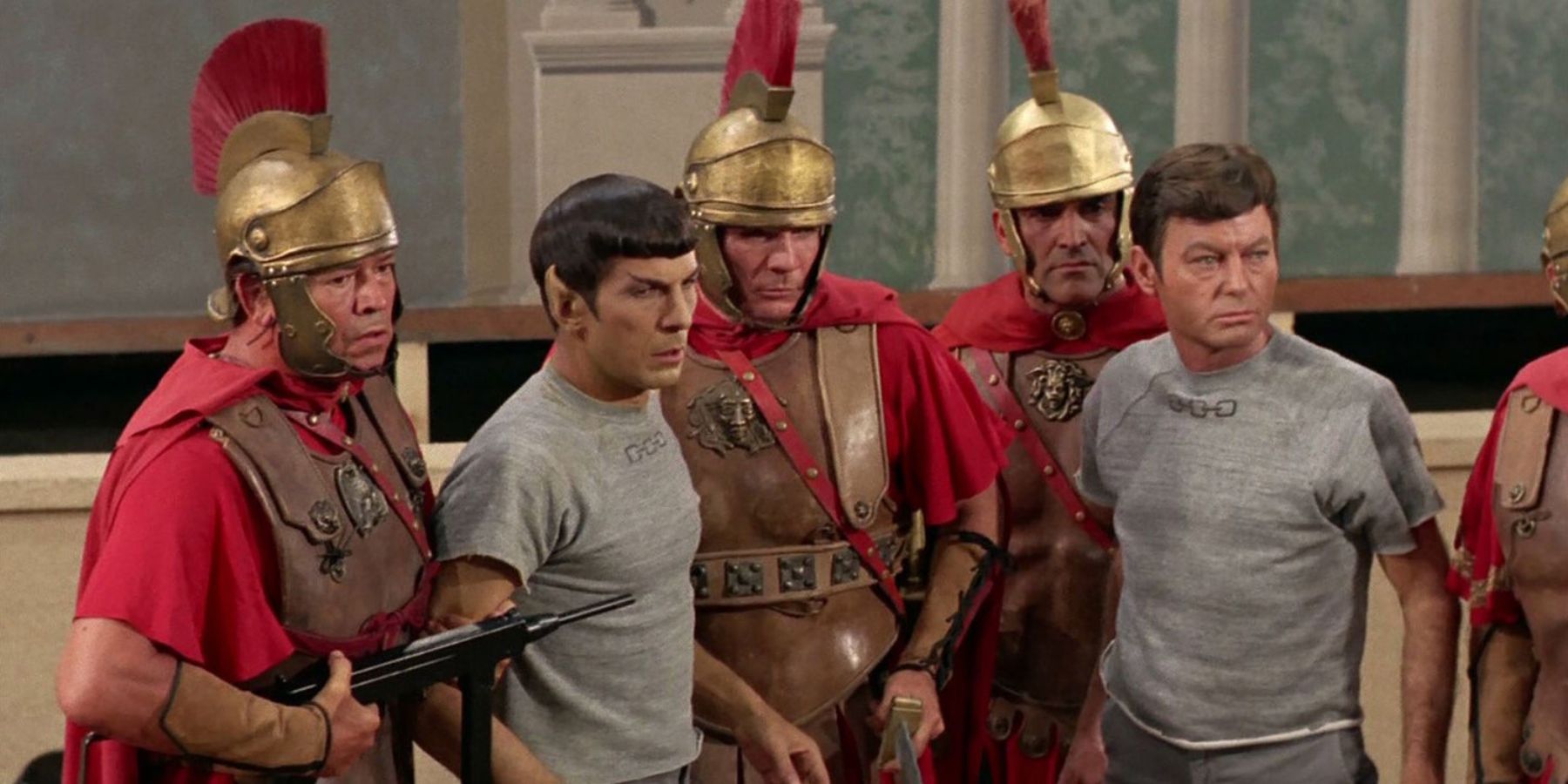In the wonderful and diverse universe present within the Star Trek franchise there are nearly 300 different alien species, including the mighty Klingons, terrifying Borg, and the boisterous humans that dominate the federation. Each of these species is different, but each has a unique culture, history, personality, and arguably most importantly, design.
While the designs of some races are questionable, especially during the Original Series, they all vary enough to distinguish themselves from the others. They can look fairly similar, such as with the Romulans and the Vulcans, but the most important similarity that connects them is that most of them, especially in the early days, look humanoid in one way or another. The definition of Humanoid is to "resemble a human, or the shape of a human," so the question arises: why, in a universe so vast and varied as the one present within the Star Trek franchise, do so many of the alien races, including humans, look the same?
The answer comes in two parts, one within the universe itself, and one outside. The short answer for the non-fictional explanation is that budget, CGI, and special effects were simply not good enough to create truly alien aliens in the Original Series. At the end of the day, adding an extra nose, ridged foreheads, or some funky-looking eyebrows were a lot simpler and cheaper than fashioning a completely different, non-humanoid figure. This is not to say the series never did this, but on the occasions they did, it often fell short or looked ridiculous. Two of the best examples were the Tribble, a vibrating fur ball, and Alfa 177 canine — which was literally a small dog with a horn fastened unceremoniously to its head. In the days before enhanced visual effects, TV producers often relied on prosthetics and animatronics to create variety onscreen. Even when it comes to modern portrayals of aliens, it is often simpler to create them as humanoid in some way or another, as it allows for an actual actor to play the part. This is present in Prometheus (2012), as the architects are basically big white, bald, humans. It also appears within more modern Star Trek iterations such as Discovery.
Ignoring budget reasons and feasibility, though, audiences might expect that there would be a little more diversity in the universe. The second, far more interesting explanation for why the majority of races look humanoid in one way or another is explained in two episodes: the Original Series episode “Bread and Circuses,” and in The Next Generation episode “The Chase.”
The former introduced the concept of Hodgkin’s Law of Parallel Planetary Development, which served as a writer's excuse to explain not only the use of humanoid aliens, but recurring props. The theory explains that similar planets (in this case, Class M planets, to which Earth belongs) with similar environments and populations often follow similar biological and cultural developments. This means that, after years and years of evolution, the outcome is a result similar to other planets of the same class across the galaxy. It can be likened to carrying out a science experiment with similar conditions: each experiment will conclude with a similar result, with only slight variations. This was used to explain why the crew of the Enterprise keeps running into cultures resembling societies from their own past; i.e. ancient Greeks or, in the case of this episode, ancient Romans.
The Next Generation episode “The Chase” elaborated on this, showing Picard discovering embedded genetic patterns that are present within various different species across the galaxy. It is believed that this genetic material, these blueprints for humanoid evolution, was spread across the universe by an advanced civilization lost billions of years ago. The episode concludes, in a very Assassins' Creed ancient civilization kind of way, with the crew reactivating a message hidden within the genetic pattern and translating it into a holographic recording. It shows a humanoid alien figure, who explains that they were the first civilization to explore the galaxy, billions of years ago. They discovered that there were no other humanoid-based lifeforms other than themselves, and thus found it hard to create common ground between them and the life that existed that was so unrecognizable and hard to comprehend. Thus, they decided to seed various planets with their own DNA in order to leave behind a legacy of life in their image.
This does not completely contradict Hodgkin’s Law of Parallel Planetary Development, as it still allowed for the environment to directly influence evolution, and keep each race within its specific humanoid blueprint, but it gave much more credibility to the similarities. What was most poignant about the message left by the ancient civilization was a hope that knowing that there was a common ancestry that linked these often warring species, would help bring them together, much like the knowledge of other life outside the safe ozone walls of Earth helped unite humankind into one race: human.






